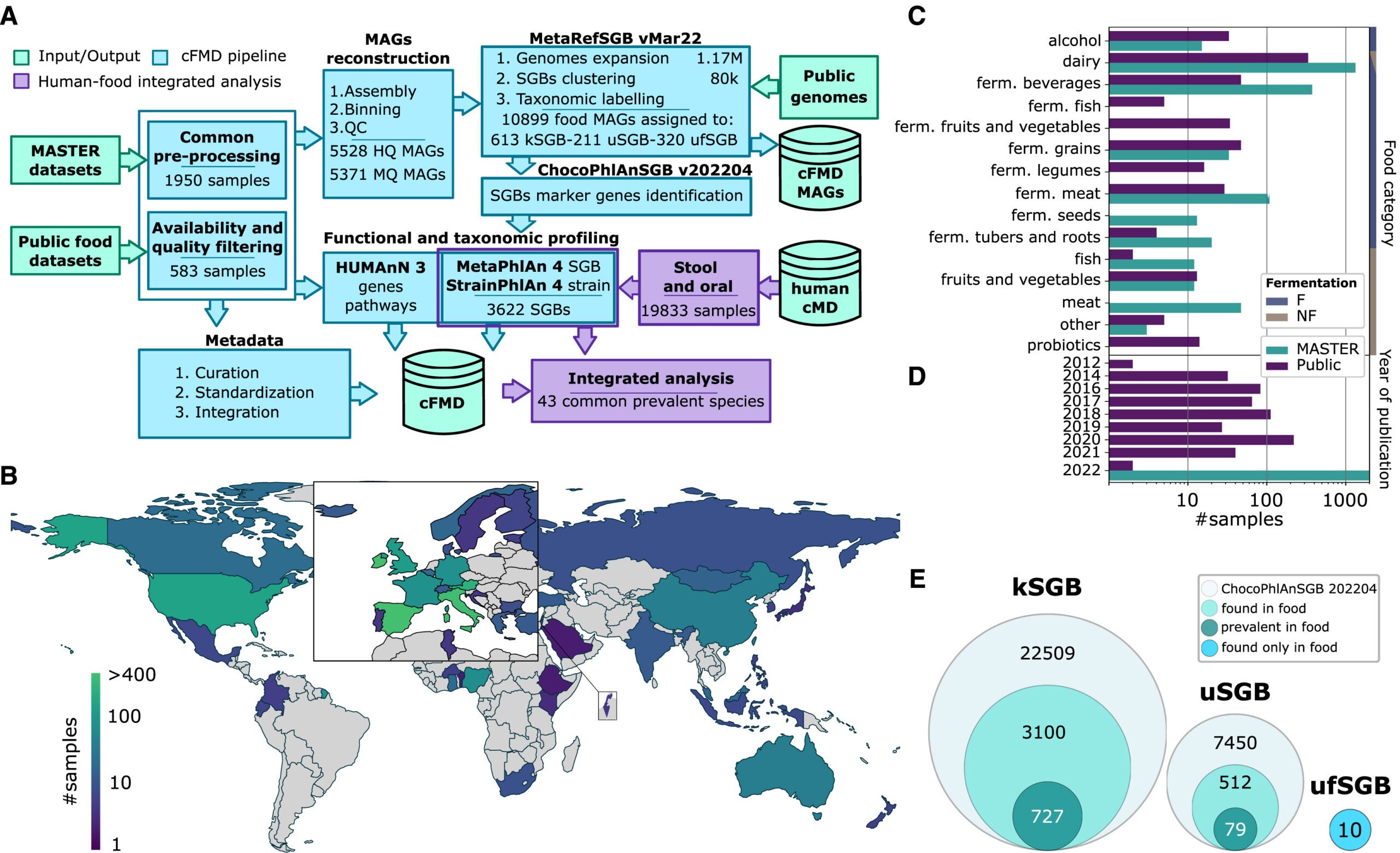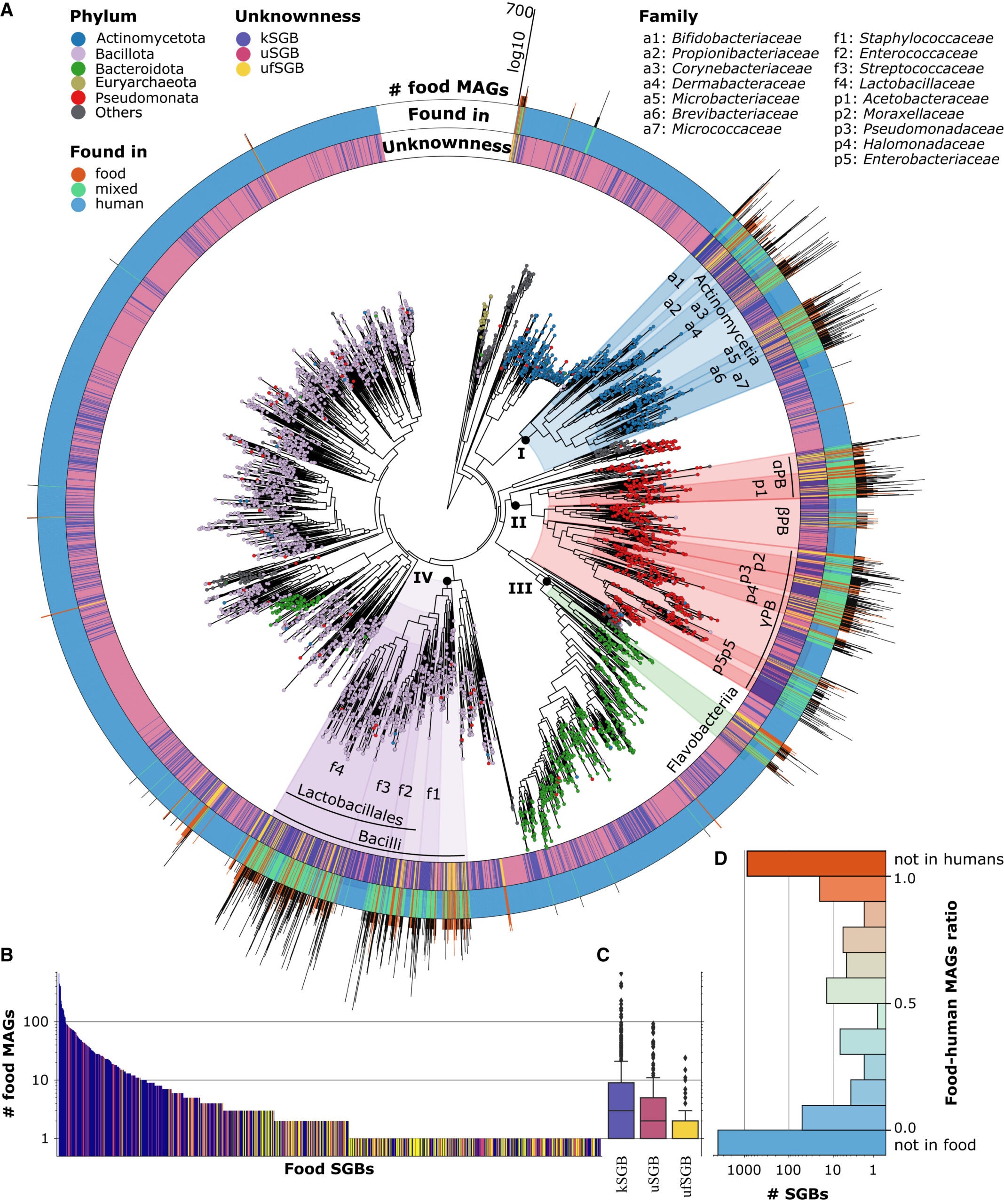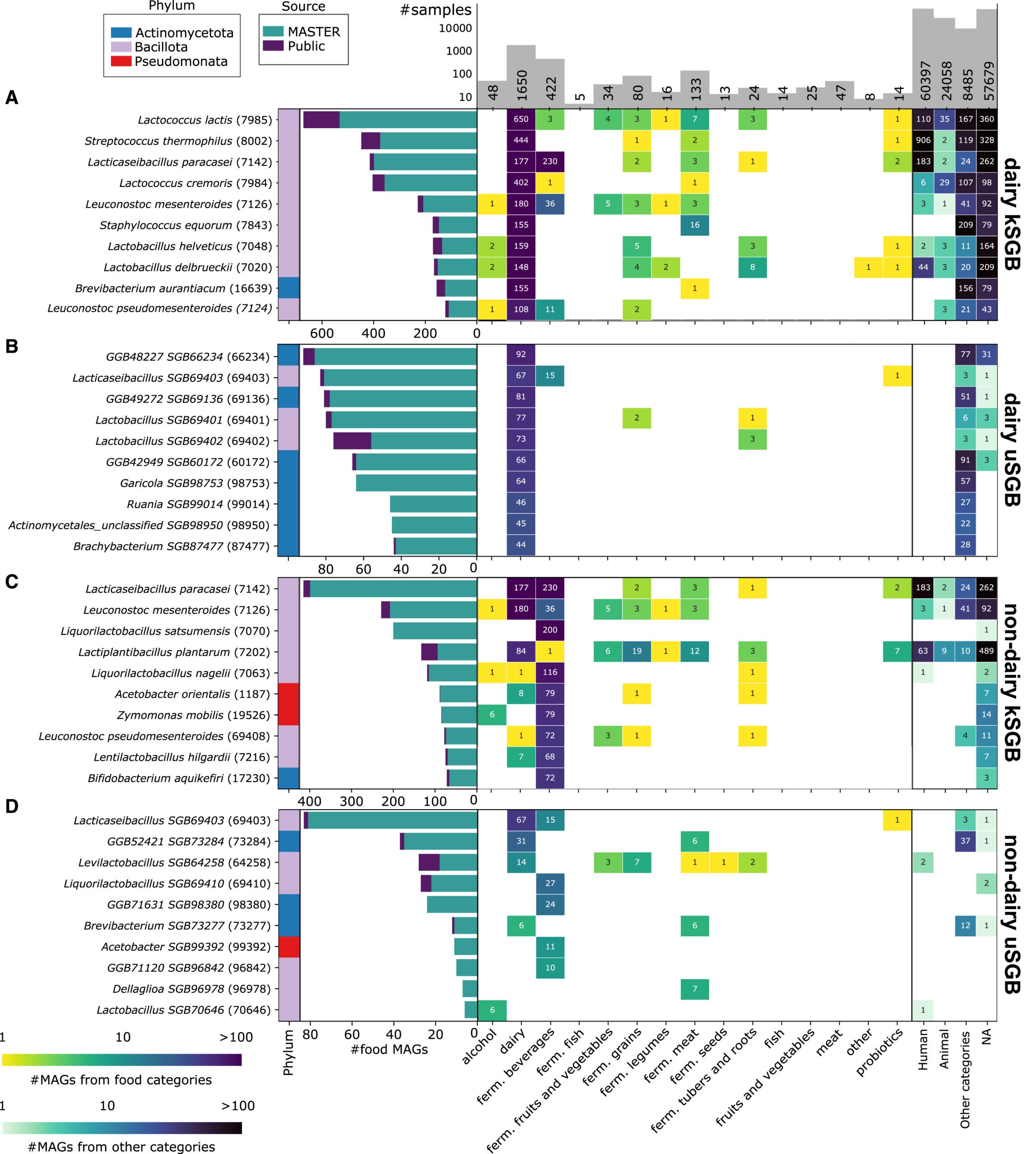The microscopic world within our food has long intrigued scientists. Complex microbiomes within what we eat influence our own gut ecosystems, yet the breadth of this microbial diversity remains largely unexplored.
Recent advances in DNA sequencing technology have allowed researchers to unveil a vast and intricate “food microbiome,” revealing surprising insights into its impact on human health and food quality.
A groundbreaking study recently mapped the food microbiome by analyzing the genetic material of 2,533 food samples collected from 50 countries. Researchers identified 10,899 food-associated microbial species, over 300 of which had never been described before. These findings, published in the journal Cell, represent the largest survey of microbes in food to date.
Using a molecular technique called metagenomics, the team sequenced all genetic material in each sample, bypassing the limitations of traditional culturing methods.

This innovative approach enabled them to uncover a rich tapestry of bacteria and fungi present in diverse food types. About 65% of the samples came from dairy products, 17% from fermented beverages, and 5% from fermented meats.
“This is the largest survey of microbes in food,” explained computational microbiologist Nicola Segata of the University of Trento. “We can now use this reference to better understand how the quality, conservation, safety, and other characteristics of food are linked to the microbes they contain.”
The findings showed that similar foods harbor similar microbes. For instance, microbial communities in fermented beverages were more alike than those in fermented meats. However, dairy products exhibited greater variability due to the diverse range of items sampled. These microbial profiles are essential for understanding how local conditions and processing techniques shape the final product.
The data hold immense potential for the food industry. Identifying which microbes are naturally present in specific food types can aid producers in creating consistent, high-quality products. This knowledge could also help food regulators define microbial standards for safety and authenticity.
Related Stories
Segata highlighted an important aspect of the research: “Some microbes are present and perform similar functions in quite different foods. At the same time, foods from specific local facilities or farms have unique microbial characteristics.”
This local microbial fingerprint could be used to authenticate foods, ensuring that products labeled as coming from a particular region genuinely originate there. For small-scale producers, it offers an opportunity to emphasize the distinct qualities of their products.
Additionally, identifying less desirable microbes—those that affect flavor or preservation—could enhance food safety protocols and minimize spoilage.
The relationship between food microbes and human health is another significant finding of the study. When researchers compared the food microbiome data with nearly 20,000 human gut microbiomes, they discovered that food-associated microbes account for approximately 3% of the adult gut microbiome and over 50% of the microbiome in newborns. This connection suggests that some gut microbes may originate directly from food.

“It might seem like only a small percentage, but that 3% can be extremely relevant for their function within our body,” Segata noted. “With this database, we can start surveying at a large scale how the microbial properties of food could impact our health.”
One example of this food-to-gut transmission involves strains of Lacticaseibacillus paracasei, which are common in fermented foods and have been found to colonize the human gut. These microbes could play a role in digestion, immunity, or even metabolic health.
Conversely, some microbial strains—such as Streptococcus gallolyticus—appear to have distinct genomic structures in food versus the human gut, indicating complex interactions between diet and health.
For over a century, food microbiologists have studied the role of microbes in food. Traditionally, this involved culturing microbes in the lab, a time-consuming and incomplete process. The advent of metagenomics revolutionized this field, enabling the comprehensive analysis of microbial communities in ways previously impossible.

“Food microbiologists have been testing for food safety for well over a hundred years now, but we’ve underutilized modern DNA sequencing technologies,” said microbiologist Paul Cotter of Teagasc and APC Microbiome Ireland. “This is the starting point for a new wave of studies in the field where we make full use of the molecular technology available.”
Beyond identifying microbes, metagenomics allows scientists to understand their functions within the food ecosystem. For example, some microbes are critical for fermentation, influencing texture and flavor. Others may produce bioactive compounds beneficial to human health. This knowledge could inform both industrial food production and small-scale artisanal practices.
This study marks a significant milestone as part of the MASTER EU consortium, a European Union-funded initiative involving 29 partners from 14 countries. By characterizing microbes across the food chain, the project aims to unlock new possibilities for food science and human health.
Looking ahead, researchers plan to explore how factors such as culture, lifestyle, and regional cuisine shape the diversity of food microbiomes. The database they created—an open-access resource—will serve as a foundation for future studies. By integrating food metagenomics with health research, scientists hope to uncover how dietary microbes influence the human microbiome and, in turn, overall well-being.

Cotter summarized the broader implications of this work: “In the future, we want to explore the diversity of these food microbiomes with respect to different foods, cultures, lifestyles, and populations.”
This research opens the door to more sustainable, healthier, and scientifically informed food systems. As we continue to explore the microscopic world within our meals, we gain not only a deeper understanding of food but also insights into its profound connection to human life.
Note: Materials provided above by The Brighter Side of News. Content may be edited for style and length.
Like these kind of feel good stories? Get The Brighter Side of News’ newsletter.
The post Researchers reveal the bacteria and fungi living in the foods we eat appeared first on The Brighter Side of News.